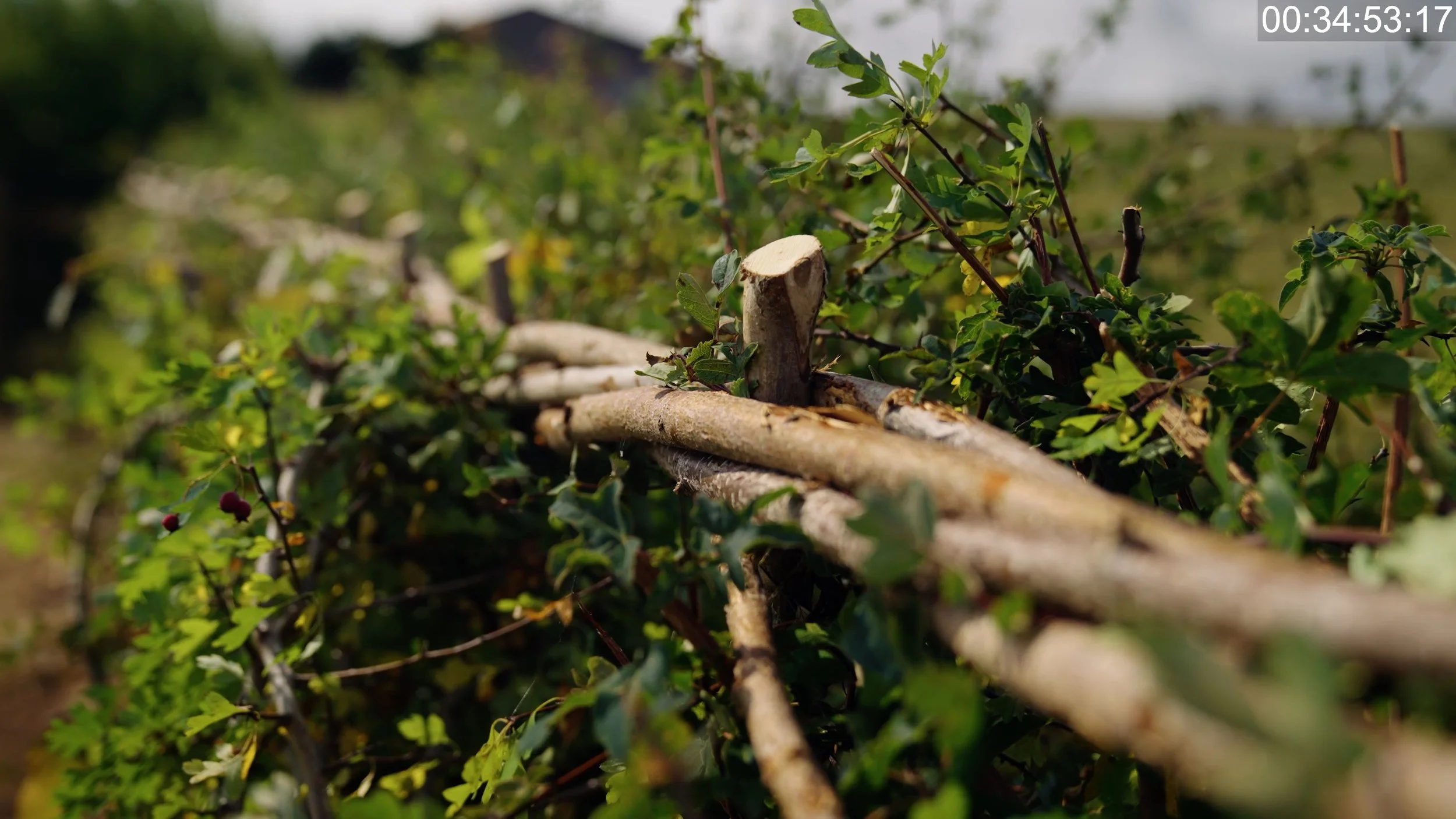
HEDGELAYING
For centuries, hedgerows were carefully managed each autumn and winter to keep them dense, healthy, and stock-proof.
Traditional “laying” encouraged strong new growth and maintained their structure, but as farming became more mechanised, the practice declined. Many hedgerows were removed or poorly managed, leading to a loss of habitat and biodiversity.
Today, with growing awareness of their ecological value, there's renewed interest in proper hedgerow care. Paul specialises in several traditional hedgelaying styles, restoring old hedges and strengthening new ones. He takes on private and stewardship work and runs annual workshops to pass on the skills needed to manage hedgerows the right way.
SERVICE
EXPLORE
Hedgelaying Tools
The traditional tools of the hedger originated on the forges of village blacksmiths across rural Britain. Today, they remain an important part of the hedgelayers armoury.
Hedgelaying Styles
From the chalk downland of Southern England, to the Welsh Borders and Wales beyond, hedgelaying styles have evolved and are as varied as the farmland they enclose.
LEARN
Courses
Intro to Hedgelaying
Learning hedgelaying is a hands-on way to connect with the land, develop practical skills, and help restore Britain’s countryside.
Whether you’re a landowner, conservationist, or simply love working outdoors, mastering this craft keeps vital rural practices alive for future generations.
Paul Lamb’s beginner-friendly day course—Intro to Hedgelaying—invites you to become a hedge hero, learning from a master with over 25 years of experience. The course covers tool use, traditional laying techniques, and ongoing hedge care, all while highlighting the importance of hedges for wildlife. It’s a unique chance to gain practical skills and help protect our living countryside.
Hedgelaying FAQs
HEDGES & HEDGELAYING
-
A hedge, or hedgerow, is a line of trees & woody shrubs planted specifically to act as a living fence or boundary marker.
-
Hedgelaying is the traditional management process for maintaining thick, healthy hedgerows. Once widespread, a decline in this form of management has seen a gradual deterioration of Britains hedgerow network. This decline correlates directly with decreasing biodiversity in our countryside.
-
Although these traditional boundaries are now rarely used as the primary means of retaining livestock, by ensuring we preserve our remaining hedgerows, we contribute to increasing biodiversity and restoring habitat.
-
Some hedgerows may be unsuitable for laying. A hedgerow that has been in decline for many years may need restoration through other methods before laying can be incorporated into its management.
-
Yes. Trimming will maintain the hedgerows structure. Between laying a trimmed hedgerow will grow horizontally rather than vertically. Improving density and its function as both a barrier and habitat.
-
Ideally, every 15-20 years and trimmed annually in between. Trimming should be done in the winter, once the wildlife had had time to benefit from the hedgerow fruits in the autumn months.
-
Yes. Different styles evolved across Britain depending on agricultural practices and personal preferences. Today, there are around thirty different styles still widely practiced.
-
I run courses predominantly in the Midland and Welsh border styles. Both are supported on a row of stakes and bound with plaited hazel rods. I also teach the Dorset/Devon and Gower styles. These are laid horizontally on top of an earth bank and remain unbound where they regenerate over coming seasons.







